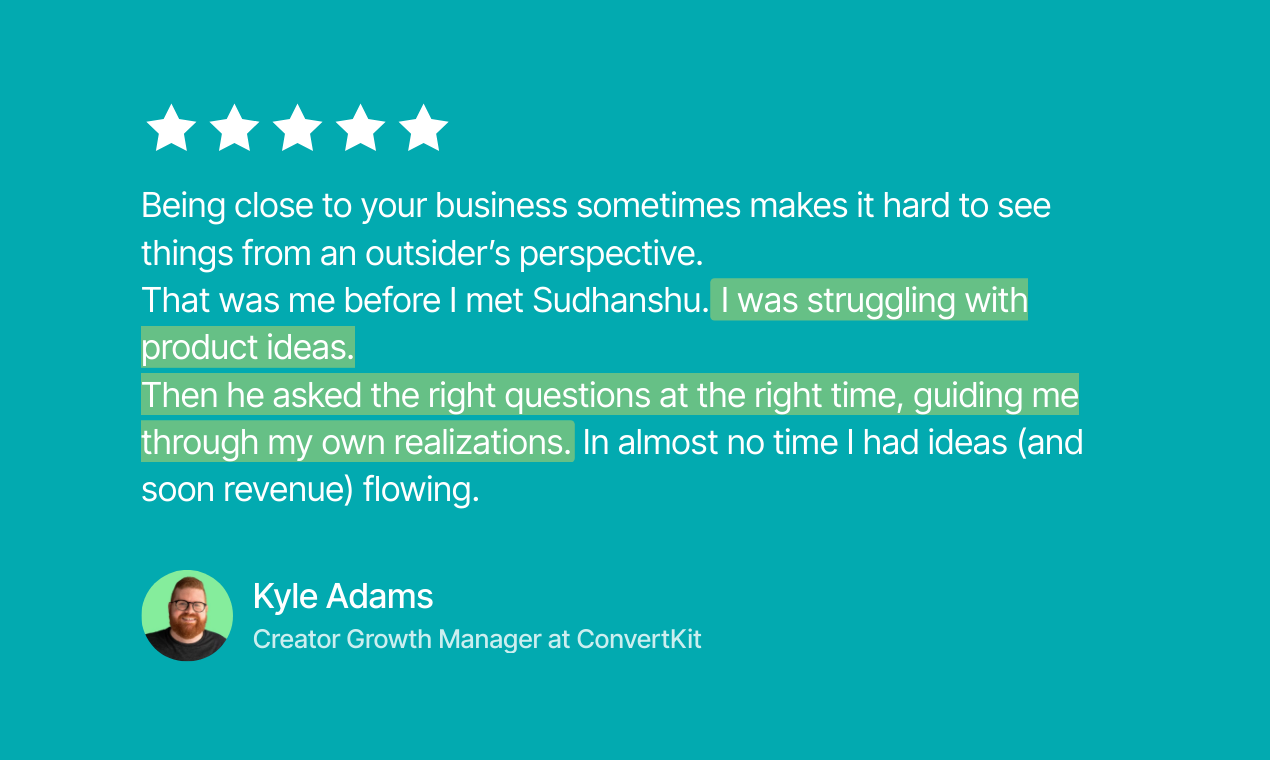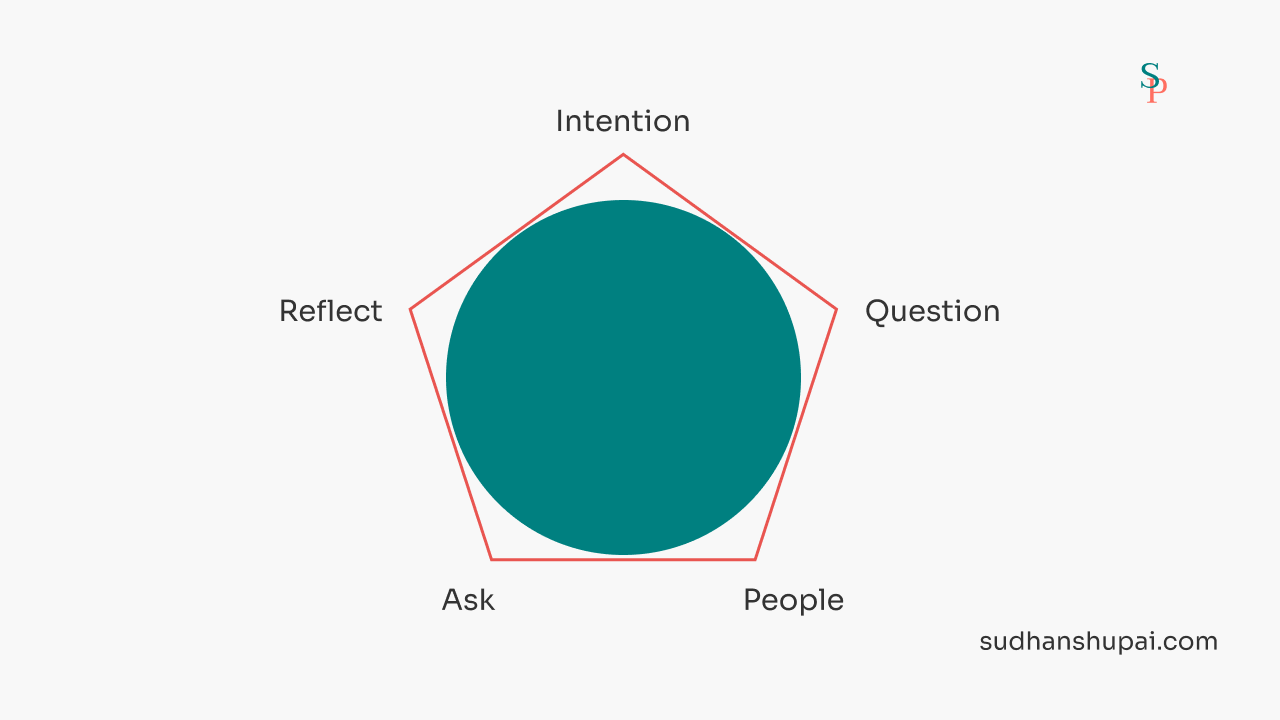5 Steps to Study Your Customer
Market research.
It sounds clinical, doesn’t it? Like you’re about to don a lab coat and measure dopamine levels in your audience’s amygdala.
But here’s the ugly little truth no one mentions on their $2,000 webinars:
Your audience will lie to you.
Not out of malice.
Out of confusion.
Because most people can’t explain why they buy, why they hesitate, or why they ghost you after three promising calls.
(“Value resides not in the object itself, but in the mind of the beholder,” Jevons said, sipping tea and probably side-eyeing your surveys.)
If you’re relying on surface answers, you’re building on swamp soil.
This essay is my attempt to fix that.
Or at least, to give you a spade sturdy enough to dig deeper without losing your mind.
Buckle Up, its about to get wierd.
🧩 Syntax of Your Question
I could spin you a 47-slide keynote on why most market research stumbles face-first into the mud.
But here’s the less glamorous (and more useful) truth:
The question you ask decides the story you hear.
That’s it. No secret handshake. No Freudian incantation. Just syntax.
A question is a lens. Point it one way, and your customer recalls desire. Twist it another, and you summon fear.
Consider this:
“What are you doing to achieve your goals?” vs. “What are you doing so you fail less than yesterday?”
Same person. Two universes of insight.
Because study isn’t just psychology—it’s a choreography of attention.
And in the creator economy, where perception routinely masquerades as reality, how you ask can be the difference between an offer that prints money and an offer that sits in your Google Drive gathering existential dust.
Next, I’ll show you how I used Socratic Questioning to help Kyle Adams pull a product idea straight out of the mental fog.

(I don’t get these types of responses by being off the cuff and unintentional)
🎭 The Socratic Stack in Action
Somewhere in the creator economy, someone is bragging about the 400 people they surveyed to “validate” their product idea.
It sounds impressive—until you realize most of those people barely remember filling out the form.
Quantity masquerades as certainty.
But this isn’t a game of consensus.
It’s a hunt for patterns.
And you can’t find patterns if your questions are limp.
Let me show you how I do it.
🎯 Step 1: Know the Monster You’re Hunting
If you can’t name what you’re trying to uncover, you’ll confuse every anecdote with insight.
And when people don’t know what you’re fishing for, they’ll toss you whatever bait is closest.
“I just want to grow my business to $10K.”
Sounds plausible. Sounds clear.
But it’s a smokescreen.
What they really mean is:
I’m tired of being invisible. I’m tired of scrapping together rent. I’m tired of feeling like I’m one webinar away from failure.
But you can’t excavate that if you start vague.
“Ambiguity in the question breeds hallucination in the answer.”
– Probably Seneca, if he was in marketing
So define your investigation.
Example:
I want to learn the hidden friction points of service businesses pivoting to info products.
That’s your North Star.
Don’t lose sight of it.
🪡 Step 2: Stitch Your Questions Backwards
Once your intention is tattooed on your cortex, reverse-engineer the prompts.
This is where the Socratic Stack earns its keep.
Here’s a cheat sheet you can steal:
- Clarification – Why do you want to diversify? What feels brittle in the current model?
- Challenge Assumptions – How do you know this is the fix? What if you’re solving the wrong problem?
- Searching for evidence – What signals told you your customers need this? Have you shipped anything similar before?
- POV – If a friend described this to you, would you buy it? Are you teaching, or facilitating?
- Find Trade-Offs – If you do this, what goes neglected? Which relationships or systems get squeezed?
- Questioning the Question – What’s the real purpose of this move? Is it growth, or is it escape?
You don’t need to memorize them.
Just know the dance steps.
Clarity isn’t an event—it’s a repeated contraction and release.
Not that you will get perfect answers, but with each passing question you should be able to get rid of unneeded variables and generalized assumptions/responses from your user.
The best part, you don’t need a long list of questions either, you just need a select 8-10 that will get you the most important insights for your project.
📡 Step 3: Find Your Respondents in the Wild
Spoiler: your best answers don’t live inside anonymous Google Forms.
They live inside people who’ve already tried and already failed.
How do you flush them out?
- Progress updates
- Philosophy of the product
- Benefits of doing it your way
You’ll magnetize the exact people living the problem you want to understand.
Side note:
Most will never raise their hand publicly.
But they’ll DM you after reading your confession at 2 a.m., when the mask slips.
That’s when the real conversation starts.
🤔 Step 4: Ask, Then Disappear
When you finally get them in the chat, don’t play the expert.
Don’t interrogate.
Nobody wants to feel like they are being attacked. Nobody wants to know what they’ve done wrong until they ask you to do so. So when the pleasantries are out of the way, don’t go attacking them, just ask what they need help with.
And then—this is crucial—shut up.
Leave space for them to think.
If you interrupt, you’re stealing their clarity.
Great questions are slow grenades.
They detonate in the pause.
🪞 Step 5: Reflect, Echo, Distill
When they answer, don’t skim.
Read it twice.
Look for the unsaid parts.
Repeat what you heard, but sharper:
“So when you said you feel stuck, is it because you’re afraid your audience has moved on?”
Watch their response.
If you see them exhale, you’re onto something real.
“Resonance is the moment someone feels seen without the need to perform.”
If the response you got isn’t clear enough, or if they didn’t get the question clear enough, explain the question and its significance so they can give you a better response.
And when they do, with all their reasoning and circumstances summarize your question and their answer back to them again so you get a confirmation to their answers and intentions.
In this first sentence, motivate the reader by telling them of the light at the end of the funnel.
Explain what this step & others before it all ladders up to. Be specific & give the reader hope as to what they can expect as a result of taking these steps.
🔁 Step 6: Repeat Without the Urge to Rush
You are pretty much through with the process. Now all you must do is repeat this same 5-step cycle for the rest of your questions.
The advantage of doing things this way is you don’t suffer from the “wisdom of the crowd” dilemma. You don’t need to collect a whole lot of responses to make your product or offer.
You can get a better result with just 10 right people, with much less stress and trouble, and give enough time to understand the people you would be building your project for.
If you can spot the same reasoning and response in more than 6 people of the same ideal user, you’ve got yourself responses that are pretty much common for the same type of psychographic.
You can use this data to
- build your product
- write your copy
- craft your offer
- add elements to give you an edge
But all this relies on you crafting the questions that will give you the answer you want. This can’t be done fast, so be prepared to spend some time on your question.
If you do, collection and interpretation becomes way faster and easier.
🧭 Final: What This All Ladders Up To
Let’s zoom out for a second.
If you’ve made it here, you’ve learned something most creators never do:
The customer is not a static profile in a PDF.
They are a shifting, contradictory, half-aware person whose needs can only be revealed by your willingness to keep asking better questions.
(Pause. Breathe.)
Because here’s the truth:
Even with the perfect syntax, the perfect intention, the perfect audience, you will get things wrong.
You’ll ship something too early.
You’ll frame a question that sounded brilliant in your head, only to watch it land like a dead fish in their inbox.
You’ll mistake politeness for resonance.
And that’s fine.
Because the real skill isn’t accuracy.
It’s an adaptation.
🧩 The Feedback Loop That Builds Everything
Remember this:
Every offer you create is just another question disguised as a product.
When you ship, you’re not declaring omniscience.
You’re saying:
“I think this solves something real. Prove me wrong. Or right.”
And the faster you can hear the answer and integrate it, the faster you build a business that doesn’t rely on guesswork.
If you get this part, you can stop obsessing over your competitors. Stop benchmarking your worth by someone else’s funnel screenshots. Stop assuming that bigger audiences automatically mean more insight.
Because the business that wins isn’t the one that guesses the best.
It’s the one that listens the longest.
🕯️ A Tiny Reminder Before You Go
One last thing.
This process isn’t fast.
It isn’t always fun.
It certainly isn’t glamorous.
But it’s the only process I know that doesn’t burn you out or make you a hostage to your own assumptions.
If you’re patient enough to walk through these steps, If you can hold your nerve while the data looks fuzzy, If you can trust that small signals compound into big certainties.
You’ll eventually wake up to find that your customers are no longer strangers.
They’re co-architects.
And every sale you make will feel less like a transaction, more like a collaboration.
“Knowledge untested is just decoration. Knowledge tested is leverage.”
– You, six months from now, hopefully
If you want to cut to the chase and all the pressure of figuring everything out the complex details and roadmap, check out the Genius Mirror Kit. A complete plug-and-play pack of roadmaps, worksheets, and templates to help you build your first or signature info product in a matter of weeks

Sudhanshu Pai
Sudhanshu Pai is the writer of THE INFO CREATOR DEPT. He spends his days researching knowledge business, creators economy, why & how 7 fig info business scale (or flop) and generally figuring out blueprints, breakthroughts and strategies to help creator educators get higher return on their expertise.
The deep dives and other content take more than 100 hours to put together, so sharing this content with others on social media will be much appreciated (and won’t go unnoticed.)
Let’s do more together:
- Want help turning your insights into a strategic roadmap? – Book a Profit Calibration session. I’ll help you find & turn invisible genius into branded intellectual assets buyers can’t ignore. This isn’t a coaching call or a funnel chat. I run a premium IP design studio for experts like you.
